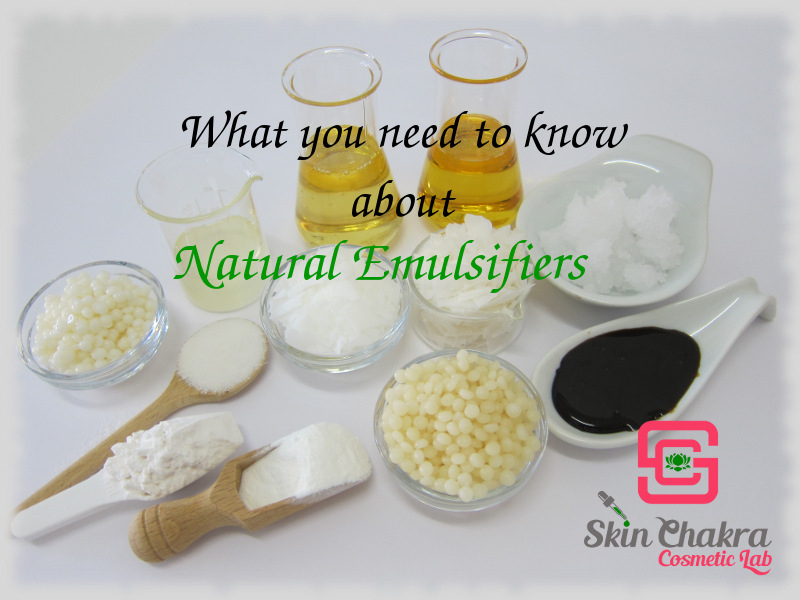ChatGPT said: Most common types of emulsifiers and their uses
Emulsifiers: Trick Active Ingredients for Attaining Flawlessly Blended Formulations
Emulsifiers play an essential duty in developing stable blends of immiscible liquids, such as oil and water. Their distinct buildings allow them to reduce surface stress, which is crucial for uniformity in numerous solutions. Recognizing the distinctions between artificial and natural emulsifiers can influence item top quality considerably. As industries significantly look for to improve texture and life span, the option procedure for the appropriate emulsifier becomes extremely important. What elements should be thought about in this vital selection?
Understanding Emulsifiers: What They Are and How They Function
Emulsifiers may appear like a simple addition to solutions, they play an important role in supporting blends of active ingredients that commonly do not blend well, such as oil and water. These compounds function by lowering surface stress at the user interface between immiscible fluids, allowing them to mix more uniformly. Emulsifiers contain both hydrophilic (water-attracting) and lipophilic (oil-attracting) homes, which enable them to secure themselves at the boundary of both stages. By doing so, they develop a safety barrier that avoids the droplets of one liquid from coalescing into larger masses, consequently preserving a secure solution. The effectiveness of an emulsifier depends on its molecular structure, which influences its capability to support combinations. In various applications, from food products to cosmetics, emulsifiers ensure a consistent structure and look, boosting both functionality and consumer allure. Their value can not be overstated in accomplishing well-blended formulas.
Kinds of Emulsifiers: All-natural vs. Artificial
Emulsifiers can be extensively categorized into two kinds: artificial and natural, each offering distinct benefits and applications. All-natural emulsifiers, stemmed from plant or animal sources, include lecithin, casein, and gum arabic (emulsifiers). These emulsifiers are usually favored in natural and clean-label items because of their very little handling and biocompatibility. Their mild nature makes them ideal for delicate solutions, particularly in food and cosmetics

On the other hand, artificial emulsifiers such as mono- and diglycerides, and polysorbates are produced with chemical processes. They are commonly made use of in commercial applications as a result of their stability and effectiveness in creating emulsions. Artificial emulsifiers typically show premium performance in severe problems, such as high temperatures or varying pH degrees. The option between synthetic and natural emulsifiers mainly relies on the certain formula needs, regulative considerations, and customer choices, affecting their reliable application in various industries.
Functions of Emulsifiers in Food and Aesthetic Formulations
The function of emulsifiers expands past simple stabilization; they are fundamental in achieving the desired appearance, rack, and appearance life of food and cosmetic products. In food formulations, emulsifiers help mix oil and water, developing smooth and consistent structures crucial for sauces, dressings, and dairy products. They decrease surface area tension, boosting the security of emulsions, which prevents splitting up and lengthens quality.
In cosmetics, emulsifiers ensure that ingredients, such as oils and water, mix seamlessly, offering a pleasurable feel and enhancing application. emulsifiers. They add to the product's viscosity and spreadability, vital for serums, creams, and lotions. In addition, emulsifiers can encapsulate energetic ingredients, boosting their circulation and effectiveness in formulations. By regulating structure and enhancing sensory attributes, emulsifiers play a crucial duty in conference consumer assumptions in both food and cosmetic industries, assuring products are not only attractive yet also functionally reliable
Selecting the Right Emulsifier for Your Item

Additionally, the target application-- whether for food, cosmetics, or pharmaceuticals-- will certainly influence the selection. Food-grade emulsifiers ought to comply with safety and security guidelines, while aesthetic emulsifiers might require skin compatibility. Reviewing factors such as HLB (Hydrophilic-Lipophilic Equilibrium) assists in forecasting emulsifier actions in specific formulations. Inevitably, a comprehensive assessment of both governing considerations and useful requirements is necessary to choose one of the most effective emulsifier, guaranteeing important source the final item fulfills the preferred quality and stability standards.

Tips for Successful Emulsion Development and Stability
Attaining successful solution formation and stability requires cautious attention to numerous essential variables. The choice of emulsifier plays a critical role; it must be compatible with the oil and water stages to assure reliable stablizing. Second, the ratio of oil to water have to be well balanced, as an improper ratio can lead to instability. Third, the blending process should be regulated; high shear mixing can aid attain smaller sized droplet sizes, boosting security.
Temperature additionally affects emulsion stability; keeping ideal temperature levels during solution avoids early splitting up. Additionally, including stabilizers such as thickeners can even more boost thickness, lowering the chance of stage separation. Carrying out detailed security tests after solution will aid recognize prospective issues, enabling for modifications prior to last production. By sticking to these standards, formulators can accomplish reliable and constant solutions that preserve their preferred residential or commercial properties over time.
Frequently Asked Questions
Can Emulsifiers Be Utilized in Vegan Formulations?
Yes, emulsifiers can be utilized in vegan formulations. Lots of plant-based emulsifiers, such as lecithin from soy or sunflower, offer reliable blending without animal-derived ingredients, making them suitable for a range of vegan items.
What Prevail Allergens in Emulsifiers?
Typical allergens in emulsifiers include soy, dairy products, and eggs, as certain emulsifiers are stemmed from these sources. Furthermore, some individuals might react to additives or preservatives utilized together with emulsifiers in various formulations.

How Do Emulsifiers Influence Rack Life of Products?
Emulsifiers boost item stability by protecting against separation of components, therefore extending service life. They alleviate wasting triggered by microbial growth and oxidation, leading to long term freshness and boosted quality in different food and aesthetic solutions.
Exist Any Wellness Problems Connected With Emulsifiers?
Research indicates prospective health and wellness worries related to emulsifiers, consisting of gut microbiome alterations and inflammation. While governing bodies usually regard them risk-free, continuous studies remain to explore lasting impacts on wellness and overall well-being.
Can Emulsifiers Improve Flavor or Fragrance in Formulations?
Emulsifiers can boost taste and additional info aroma in formulas by enhancing navigate here component diffusion and stability. This leads to an extra consistent product, enabling flavors to meld efficiently, eventually causing a much more satisfying sensory experience for customers.
Emulsifiers might seem like a simple addition to solutions, they play an important role in stabilizing mixtures of ingredients that generally do not blend well, such as oil and water. In food formulations, emulsifiers aid blend oil and water, developing consistent and smooth textures necessary for sauces, dressings, and milk products. Food-grade emulsifiers ought to abide with safety policies, while cosmetic emulsifiers may require skin compatibility. Usual allergens in emulsifiers consist of soy, dairy, and eggs, as particular emulsifiers are derived from these sources. Emulsifiers can enhance flavor and aroma in formulations by enhancing active ingredient dispersion and stability.